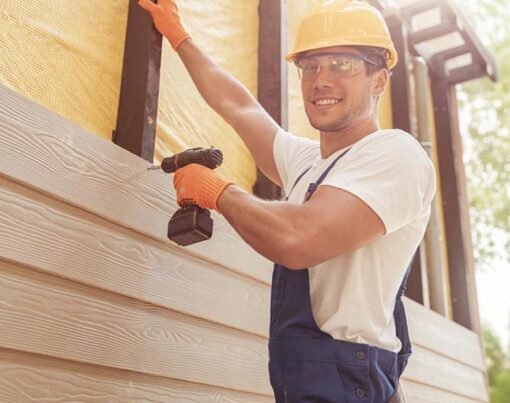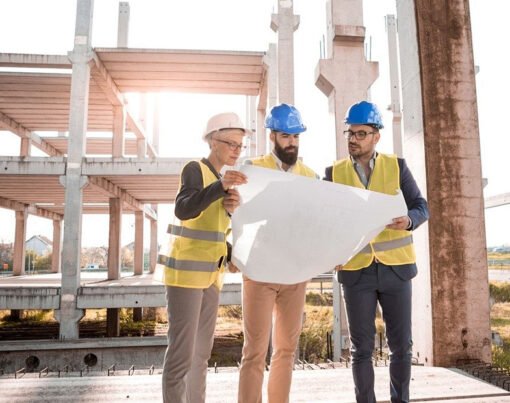Shipping containers have emerged as a groundbreaking solution in sustainable architecture and construction. Once primarily associated with transporting goods across oceans, these giant metal boxes have found a new purpose as eco-friendly building blocks.
By repurposing and transforming these containers into functional structures, architects and builders reduce waste and create innovative and sustainable living and working spaces. This article will explore eight eco-friendly advancements in shipping container construction that are making waves in the construction industry.
Table of Contents
1. Container Upcycling
Container upcycling is at the forefront of eco-friendly container construction. Instead of leaving old shipping containers to rust away in ports, these containers are given a new lease on life.
Repurposing them reduces the environmental impact of disposing of these massive steel structures and saves energy and resources that would have been used in manufacturing new building materials.
2. Modular Design
One of the key advantages of using shipping containers in construction is their modular nature. Containers are designed to be stackable and transportable, making them ideal for creating modular structures. The design means you can easily expand or modify a building by adding or removing containers.
This adaptability minimizes waste and ensures the structure can evolve to meet changing needs without extensive demolition and rebuilding. You can check SCF’s shipping container range to know which size and design you can use for your construction.
3. Energy-Efficient Insulation
Shipping containers are constructed from metal, which can transmit heat and cold. However, modern container construction methods prioritize energy-efficient insulation. High-quality insulation materials create a comfortable and temperature-controlled environment inside the containers.
This process reduces energy consumption for heating and cooling and provides a more comfortable living or working space.
4. Solar Panel Integration
Many incorporate solar panel systems to enhance shipping container buildings’ sustainability further. Solar panels can be easily mounted on the roof of containers, taking advantage of their flat surfaces.
These panels generate renewable energy, reducing the reliance on traditional power sources and lowering utility bills. Excess energy can even be stored in batteries during cloudy days or at night.
5. Green Roofs and Living Walls
Incorporating green roofs and living walls into the design is a common practice to optimize the ecological advantages of container construction. These roofs are covered with vegetation, which adds natural beauty, provides insulation, improves air quality, and reduces stormwater runoff.
Living walls, on the other hand, are vertical gardens that contribute to air purification and create a pleasant, natural atmosphere inside the container structure.
6. Rainwater Harvesting
Innovative container construction projects incorporate rainwater harvesting systems. These systems collect and store rainwater for various uses, such as irrigation, flushing toilets, or even as a source of potable water after proper treatment.
By reducing the demand for municipal water supplies, rainwater harvesting helps conserve precious resources.
7. Passive Design Principles
Passive design principles are central to eco-friendly container construction. By strategically positioning containers and incorporating features like large windows for natural light and cross-ventilation, builders can reduce the need for artificial lighting and mechanical cooling or heating systems. This approach saves energy and enhances the overall comfort of the space.
8. Eco-Friendly Finishes
The finishing touches of a shipping container construction project can also contribute to its eco-friendliness. Builders increasingly use eco-friendly materials for flooring, paint, and other interior finishes.
These materials are non-toxic, durable, and often made from renewable or recycled sources. They promote a healthier indoor environment and reduce the structure’s carbon footprint.
Benefits of Shipping Container Construction
In exploring eco-friendly advancements in shipping container construction, you have witnessed the remarkable transformation of these once-utilitarian containers into versatile, sustainable building materials. However, there’s more to the story. Here are the many benefits and applications of eco-conscious construction trends.
Cost-Effective Construction
Beyond their sustainability merits, shipping container buildings are often more cost effective than traditional construction methods. The relatively low initial investment and reduced construction time make them an attractive option for individuals and organizations seeking affordable yet sustainable building solutions.
This cost-efficiency can be especially appealing in affordable housing projects, disaster relief efforts, and remote or off-grid locations.
Adaptive Reuse
Shipping containers also shine in the realm of adaptive reuse. Repurposing old containers into homes, offices, pop-up shops, or community spaces gives new life to discarded materials. It’s a creative and eco-friendly way to address the growing issue of abandoned containers worldwide.
Additionally, adaptive reuse preserves these containers’ unique character and history, adding character to the finished structures.
Minimal Site Disturbance
Container construction minimizes the disruption to natural landscapes and ecosystems during the building process. Since containers are prefabricated off-site, construction sites experience less noise, dust, and waste than traditional construction projects.
This advantage makes container construction attractive for environmentally sensitive areas, including nature reserves and remote wilderness locations.
Build a Sustainable Future with Shipping Containers
Shipping container construction has evolved into a sustainable and innovative solution for modern architecture and construction. These eco-friendly advancements reduce waste, conserve resources, and create functional, aesthetically pleasing, and environmentally responsible structures.
As the world grapples with environmental challenges, adopting shipping container construction techniques is a step towards a more sustainable and greener future in the construction industry.
So, consider the eco-friendly advantages of shipping container construction if you want to build a home, an office, or any other structure. It’s a sustainable choice that benefits both you and the planet.










